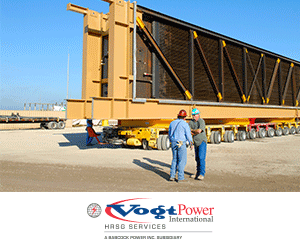Week One review. What follows are summaries of user presentations from last Tuesday and Wednesday. They illustrate the value of participation in the 7F Users Group’s virtual conference and next year’s F2F in St. Louis. To dig deeper, speaker PowerPoints will soon be available on the Power Users website to registered owner/operators. Registration is easy if you don’t already have a “library card.”
DAY 1: SAFETY AND COMBUSTION
Tuesday’s Safety Session, chaired by Dominion’s Chuck Spanos, followed introductory remarks by the 2020 Steering Committee Chair Matt Dineen of Duke Energy. Presentations addressed two of the industry’s hottest safety topics: Hex chrome and Covid-19 mitigation.
Hex chrome: You may be aware of it but how much do you really know?
The well-organized hex-chrome presentation is ideal for a lunch-and-learn session in the plant break room to be sure all personnel are on the same page with regard to this issue. It begins with a review of the health effects associated with exposure and provides guidance on exposure limits. Control measures to protect workers—respirators, protective clothing, increased ventilation, adjustments in the way a task is performed, etc—follow.
Cleaning methods are an important part of the presentation. Surfaces contaminated with hex chrome typically must be cleaned by HEPA-filter-equipped vacuums or by wet methods, such as wet sweeping or wet scrubbing. GE does not recommend use of dry methods for contaminant removal—especially wire brushing and compressed air—because they may cause the residue to become airborne. Also, waste material or debris contaminated with hex chrome must be collected and disposed of in sealed, impermeable bags or other closed, impermeable containers.
The OEM’s Product Service Safety Bulletin (PSSB) 20180709A-R4 and OSHA 3373 were recommended information resources. The first alerts against the use of anti-seize compounds that contain calcium and have the potential to result in the formation of hex chrome when applied to chromium-containing materials and exposed to elevated temperatures. The anti-seize compounds recommended for Frame 6, 7, and 9 gas turbines are Kluber paste HEL 46-4500 and Bonderite L-GP GP460.
The speaker said he was not aware of any reported hospitalizations tied to hex-chrome exposure, which is not characterized by an “acute” attack. However, health-related effects could show up years later. A person wouldn’t necessarily know if he or she was contaminated by hex chrome or inadvertently ingested it. Those users with a nuclear background might see similarities with inadvertent exposure to radioactive material.
Covid-19: Is there anything else we should know, except accurate facts?
The speaker developed slides on what has been reported to date: symptoms, groups at high risk for severe illness, precautions, contact guidance, and employee protection. Nothing new here, and to the speaker’s credit, he didn’t spend valuable time rehashing this material. Instead he focused on a so-called outage planning heat map and changes his colleagues might consider to their outage execution plans for mitigating exposure.
The heat map described in the presentation and available to you on the Power Users website identifies “at-risk” outages and mitigations and the value of holding regular meetings to update outage plans.
Lessons learned during recent outages suggested the following changes to consider regarding outage execution to avoid exposure:
-
- Segregate shift teams. Use phone or other digital means to communicate during shift turnovers. Provide a separate trailer for each shift.
- Maintain social distancing during morning toolbox talks and move them outside (weather permitting). Strive to conduct meetings in 15 minutes or less.
- Eliminate weekly group safety meetings; move them online if need be.
- Schedule breaks in a manner to minimize personnel contact.
- Organize work on the deck plates so only necessary personnel are present and try to maintain the suggested 6-ft distancing to the degree possible. If a “safe” distance cannot be maintained, issue additional PPE to compensate.
- Limit one person per row of seats in company vehicles.
- Stress increased personal hygiene. Add hand-wash stations and increase cleaning frequencies in common areas as necessary to achieve goals.
- Monitor the temperatures of workers as they enter the site.
- Be aware of the increased potential for heat-related stress created by wearing extra PPE.
Perhaps the most important lesson learned: Day-to-day productivity has not been impacted significantly by implementation of the above rules. The biggest concern for anyone with outage responsibility: The chance of an entire job being shut down if someone in the workforce were to test positive for Covid-19. Be vigilant, maintain strict adherence to the health aspects of your outage plan.
FlameTop 3.0: A project update
The first presentation in the Combustion Session, chaired by John Rogers of SRP, reviewed one user’s experience with FlameTop 3.0™, which combines the performance improvements offered by PSM’s Flamesheet and G-Top 3.0 products. The 2 × 1 cogen plant so equipped is powered by unflared 7241 7FAs.
The shortlist of Flamesheet performance goals/results:
-
- Confirmed: Turndown to 50% output while maintaining permitted NOx and CO emissions of less than 9 ppm each; achieved turndown to 40% output.
- Confirmed: Less than 5 ppm NOx at 40% output, less than 7 ppm at full load.
- Confirmed: Less than 9 ppm CO at 40% output, about 1 ppm at full load.
- Confirmed: Efficiency equal to or better than gas-turbine efficiency prior to upgrade.
- Confirmed: Efficiency at 50% load less than 130% of the full-load efficiency; less than 127% achieved.
- Confirmed: Elimination of visible emissions on startup.
The shortlist of G-Top 3.0 performance goals/results:
-
- Confirmed: Maintained all Flamesheet achievements.
- Confirmed: Increased gas-turbine output by 5.79%.
- Confirmed: Decreased unit heat rate by 1.71%.
- Confirmed: Eliminated seasonal tuning.
- Evaluating: Longer maintenance intervals made possible by different modes of operation.
After FlameTop 3.0 installation, the plant experienced several engine trips triggered by the flashback protection system. Suspected issue: Increased sensitivity to fuel-gas-skid condensate formation leading to autoignition. Combustor mods implemented in November 2019 to eliminate the problem were successful. FlameTop 3.0 was said to have allowed the cogen facility to better align with the host site’s steam and electrical demands. Satisfied customer: The second unit will be converted to FlameTop 3.0 in the fall during a hot-gas-path inspection.
Lessons learned during commissioning of 7FA.04 dual-fuel units with DLN 2.6+
Three valuable experiences were shared by a user who was involved in the commissioning of two 7FA.04-powered 1 × 1 combined cycles early this year. Both units are equipped for dual-fuel firing with DLN 2.6+ combustors, and have bypass dampers. Fired hours on the units just ahead of the meeting were 3300 (68 starts) and 3100 (95 starts). Run profile: Baseload with automatic generation control (load following).
The speaker urged attendees planning a commissioning to understand how their unit’s warranty handles newly issued TILs (Technical Information Letters) to save aggravation and money down the road. His units were able to incorporate most TILs during the construction and commissioning process. However, some TILs were assigned after the units were received and would have required significant disassembly for compliance. Suggested work was postponed for a future outage.
The need to verify that no foreign materials remain in the machine when it is buttoned-up for operation was stressed. The speaker said, “The seemingly most-simple task can have severe consequences if not performed with rigor.”
During inlet-guide-vane calibrations in preparation for performance testing of one unit, damage was found on several R0 blades. Inspection revealed that a ball of duct tape had been left in the inlet and was ingested. A dozen blades were damaged and blended; there were no vibration issues afterwards. However, tape residue had reached the seventh stage and was not completely removed by water washing.
Commissioning of one unit on oil proved difficult. It could not be tuned when in the liquid-fuel mode because of high exhaust spreads. Note that these units are equipped with pressure-atomized liquid-fuel systems (acronym is XAA), which eliminate the need for atomizing air. No coking has been experienced, but operating time on oil was less than about 50 hours for each gas turbine. The user said more run time was required to fully evaluate the reliability of the liquid fuel system.
XAA is an emulsification system that mixes liquid fuel and water ahead of the end cover. The speaker reported that water injection starts at about 40 MW following a pushbutton start on oil only. Water is used to flush the fuel system after burning oil.
Learn how GE engineers found and eliminated the gremlins responsible for the operational problem by accessing the presentation on the Power Users website. To learn more about this system, request GEK 121513 from the OEM.
Using polling results to guide open discussion sessions
The 7F was the first user organization to use electronic polling as a method for guiding and contributing to topical discussions, according to the editors. Tenaska’s Christa Warren, the 7F Users Group’s vice chair for 2020 makes liberal use of polling in her interactions with the group during annual meetings. She led a brief discussion on a couple of combustion issues that appeared on agendas of previous meetings to see if there was anything new to talk about.
One subject was fuel-nozzle damage, which had been experienced by 56% of the attendees. As for cause, 28% of the respondents named fuel contamination; “other” and “unknown” received 64% of the votes. Warren put up photos of fuel-nozzle damage on the screen to get some feedback. One user said that at least some of the damage shown likely came from burning because the flame was not detached from the nozzle like it should be. Another offered that proper use of atomizing air is critical to nozzle damage control. Yet another said most damage he has seen was on PM2 and PM3 nozzles. High NOx and ammonia were said to be key indicators of fuel-nozzle damage.
Another topic was the adverse impact of cold weather on operability. Here are the questions Warren asked the group:
-
- Do you have autotune installed? More than three-quarters (78%) of the responding attendees said “yes,” with 63% of the users equipped with a GE system.
- Do you have issues during cold weather with high-dynamics alarms that require an operator response? Answers: No, 45%; rarely, 41%; frequently, 14%.
One comment was that model-based control works well, except possibly in cold weather. Suggestion for those with issues: Operator intervention to possibly change NOx, for example.
DAY 2: COMPRESSOR AND AUXILIARIES
The Compressor Session, with Warren at the helm, opened Day Two of the user presentations. Topics were Row 1 damage from inlet FOD and the value of pressure-washing inlet guide vanes.
Inlet-duct liner-attachment failure releases heavy vinyl material that damages R1 blades
This presentation should be reviewed by personnel at any plant with an inlet duct, or inlet silencers, manufactured by J&G Steel. The speaker reported on his plant’s issues linked to manufacturing errors made by the vendor since a 2016 borescope inspection found insulation in the cooling passage of a first-stage nozzle. TIL-1995 (April 2016), “Silencer/Inlet Bleed Heat Duct Inspection,” was the first response by the OEM; TIL 2173 (December 2019), “Inlet Silencer Panel Inspection,” was the second.
The CliffsNotes version of this presentation is that pieces of the vinyl moisture/noise barrier, located between the inner liner and the mineral-wool insulation/outer wall of the inlet duct, were released when stitch welds failed. The welds, which anchored the inner liner to support plates for the insulation system, were ground flat in error, weakening those joints. Vibration likely caused the weakened welds to fail.
The speaker said the damage to the Row 1 compressor blades resembled ice damage. All first-stage blades were removed, without pulling the rotor. Two of the blades with bent corners were blended; three blades with more substantial damage were replaced.
Pressure-wash IGVs to restore efficiency
This presenter’s plant pressure-washes the bellmouths and inlet guide vanes of its gas-turbine compressors every quarter—sometimes more frequently if a drop in performance so dictates. The pressure-wash idea was pursued after a roll of paper towels used for cleaning the IGVs was left inside the machine prior to restart and caused considerable damage.
The gas turbines operate in a challenging process environment and foul quickly. The pressure washer is operated by plant personnel at 3200 psig; the nozzle is held 2 to 3 in. from the vane surface. A typical cleaning procedure is as follows:
-
- With IGVs in the closed position, saturate the vanes and bellmouth with water.
- Coat the vanes and bellmouth with ZOK [link] at full concentration. A manual pump-up sprayer is ideal for this purpose.
- Allow the ZOK to soak in and loosen the debris for about 10 minutes. Important not to let the ZOK fully dry because that would make it much harder to remove.
- Pressure-wash the vanes and bellmouth with water.
- Open the IGVs and repeat the process. An added benefit of opening the IGVs is that you clean the first two or three compressor stages as well.
- Offline water-wash the entire compressor before returning the unit to service.
At this plant, pressure-washing the IGVs alone boosts output of the 7FA.03 gas turbine by 4 to 6 MW. These numbers increase, of course, if a full compressor water wash follows the pressure-wash step. Plant personnel can complete a pressure wash in less than two hours. A full water wash and pressure wash takes about eight hours.
Readers considering a pressure wash will benefit from reviewing the presentation, which offers valuable details and safety hints.
Get more than a glimpse into battery storage/GT peaker integration design
If you want to stay on the cutting edge of gas-turbine facility design, access this presentation on grid-scale battery energy storage systems (BESS), made Wednesday, June 17, during the first segment of the Auxiliaries Session, chaired by Bryan Graham. Owner/operators are getting acquainted with a variety of grid-scale BESSs. But one thing’s for sure: Many of them will be destined for existing gas-turbine and combined-cycle facilities.
This presentation reviews a 7.4-MWh lithium-ion BESS designed to black start a 2001-vintage 150-MW 7F.03 simple-cycle gas turbine/generator. The batteries are specified for a 10-yr life based on one charge/discharge cycle per month. Note that black-start equipment often is started for test purposes more than for an actual black start.
Replete with extensive electrical one-line and circuit diagrams, the slides should be especially attractive to electrical engineers. Other users will take note of the detailed sequence-of-events descriptions for how the BESS and gas turbine (with an upgraded load commutated inverter, LCI) work together during synchronization and startup.
Grid-scale battery geeks will benefit by learning about the extensive BESS fire suppression system, which is comprised of three major subsystems:
-
- An extensive lithium-ion gas detection monitoring array in each of the battery enclosures. Each enclosure contains 21 individual sensors connected up into two controllers.
- A spray suppression system inside the enclosures which deploys a fluid mixture of 30% inert gas and 70% potassium particulate.
- A water spray nozzle system in between the enclosure rows to prevent heat transfer from one enclosure to others across the walkway.
Battery enclosure temperature control is critical for BESS systems; each enclosure is equipped with two 100% redundant 6-ton HVAC units comprised of a 13,000- to 67,000-Btu/hr chiller, 15-kW heater, and variable-speed blower operating between 850 and 1700 cfm.
Startup posed several challenges and lessons for others. For example, the harmonic filters were designed based on the original LCI design data. However, the live data captured during unit start revealed the noise was much worse. So, the harmonic filter was redesigned for the actual data, which doubled its size.
The black-start procedure required many revisions after several failed start attempts caused by logic oversights, wiring and hardware issues, etc. However, after the first successful startup, everyone on the project was surprised that the battery had still retained 94% state of charge, a key measure of the depth of the cycle, battery life, and performance.
Lube-oil conditioner upgrade
There have been significant improvements in lube-oil polishing technology since this baseload 1 × 1 STAG 107FA plant began commercial operation at the end of 1997. Its lube-oil system has a single 10,000-gal tank serving both the gas and steam turbines.
A portable oil conditioning unit purchased in 2000 had reached end-of-life and plant personnel jumped at the opportunity to purchase a modern system equipped with the latest filtration capabilities and instrumentation to dramatically reduce both particulate count and moisture content.
A review of this presentation is a good first step for those dissatisfied with the performance of their lube-oil conditioning system.







